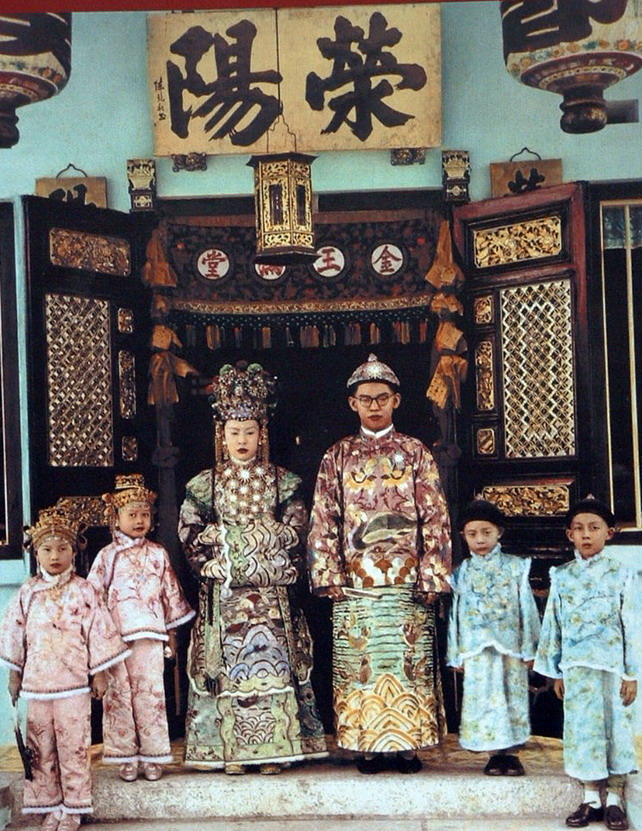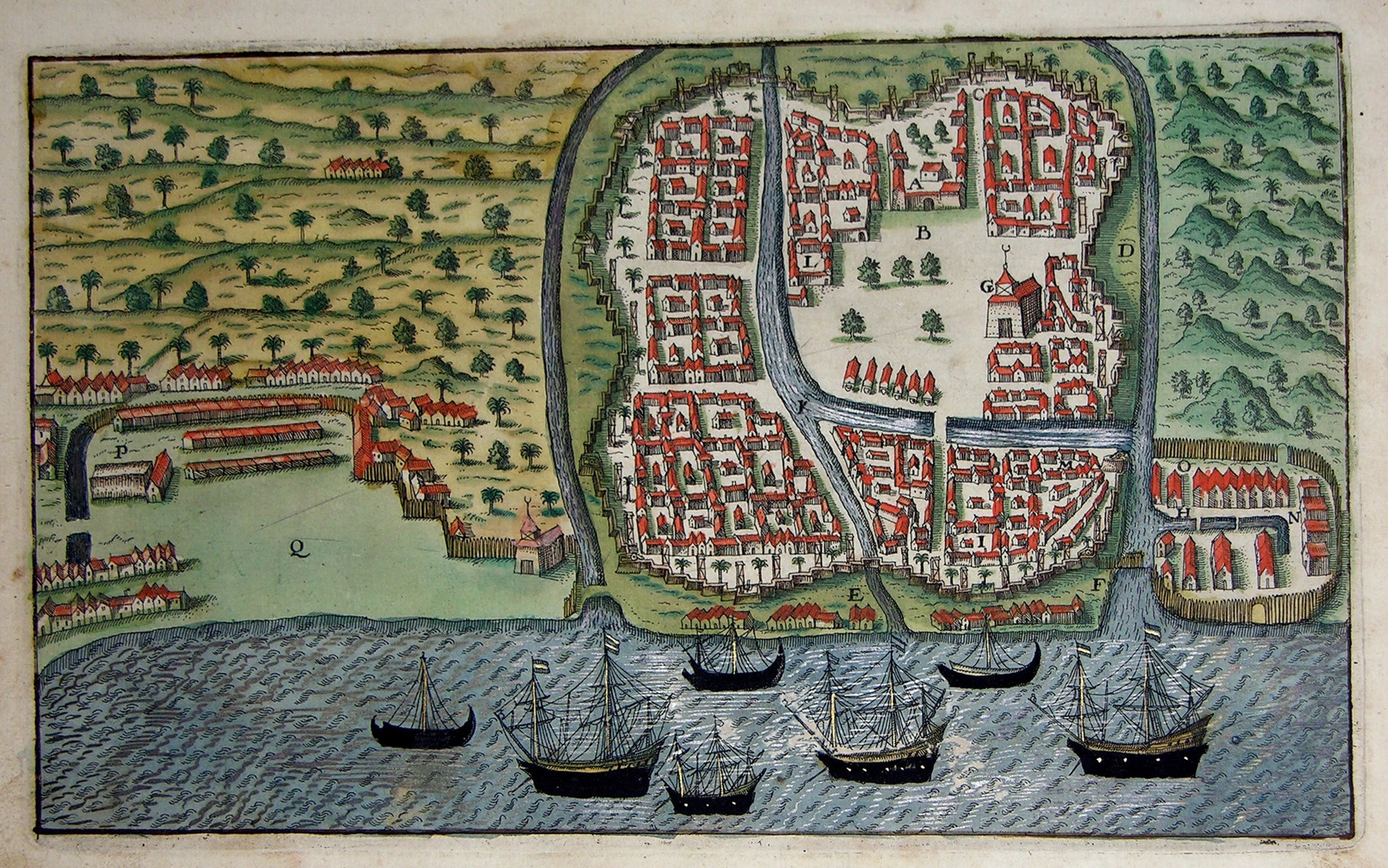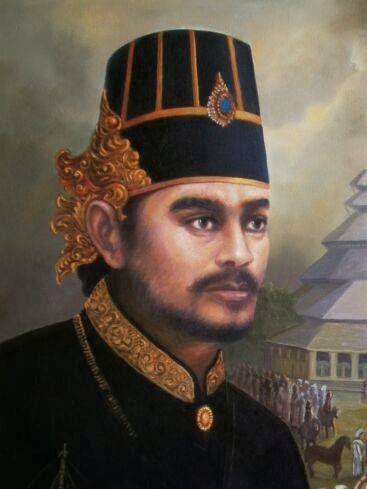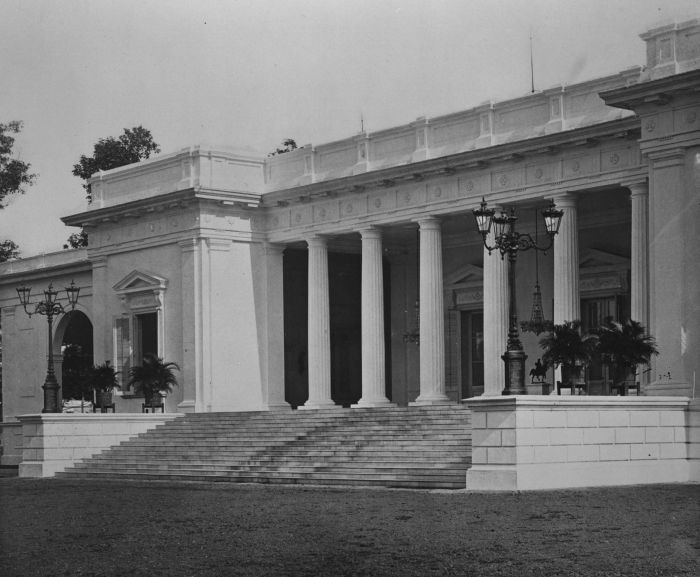|
Java War (1741–1743)
The Java War of 1741 to 1743 was an armed struggle by a joint Chinese and Javanese army against the Dutch East India Company and pro-Dutch Javanese that took place in central and eastern Java. Ending in victory for the Dutch, the war led to the fall of the Sultanate of Mataram and, indirectly, the founding of both the Sunanate of Surakarta and the Sultanate of Yogyakarta. After years of growing anti-Chinese sentiment, Dutch forces massacred 10,000 ethnic Chinese in Batavia (now Jakarta) in October 1740. A group of survivors led by Khe Pandjang fled across the Sundra Strait, eventually heading east for Semarang on the island of Java. Despite being warned of the impending uprising, the head of the Dutch East India Company's military, Bartholomeus Visscher, ignored his advisers and did not prepare reinforcements. As the situation developed, the court of , Sunan of Mataram, decided to tentatively support the Chinese while seemingly helping the Dutch. After the first casualties ... [...More Info...] [...Related Items...] OR: [Wikipedia] [Google] [Baidu] |
Dutch East India Company
The United East India Company ( nl, Verenigde Oostindische Compagnie, the VOC) was a chartered company established on the 20th March 1602 by the States General of the Netherlands amalgamating existing companies into the first joint-stock company in the world, granting it a 21-year monopoly to carry out trade activities in Asia. Shares in the company could be bought by any resident of the United Provinces and then subsequently bought and sold in open-air secondary markets (one of which became the Amsterdam Stock Exchange). It is sometimes considered to have been the first multinational corporation. It was a powerful company, possessing quasi-governmental powers, including the ability to wage war, imprison and execute convicts, negotiate treaties, strike its own coins, and establish colonies. They are also known for their international slave trade. Statistically, the VOC eclipsed all of its rivals in the Asia trade. Between 1602 and 1796 the VOC sent almost a million Eur ... [...More Info...] [...Related Items...] OR: [Wikipedia] [Google] [Baidu] |
Kartosuro
Kartosuro (also spelled Kartasura) is an Indonesian subdistrict ''(Kecamatan)'' in the Sukoharjo Regency, Central Java. Kartosuro is a Surakarta's satellite city, and a junction of Surabaya-Solo-Yogyakarta and Solo-Semarang highway. It can be reached within minutes southward of Surakarta's International Airport of Adi Sumarmo. Capital of Mataram 1680–1755 In the seventeenth century Kartosuro was the capital of the Sultanate of Mataram between 1680 and 1755. It is commonly referred to as the Kartasura era or period of the Mataram sultanate—it preceded the transfer to Surakarta by Pakubuwana II. There were considerable problems for the sultanate in this era: * A difficult relationship with the Dutch East India Company (VOC) * The issues of succession, such as Treaty of Giyanti (1755) * The ''Geger Pecinan'', Chinese rebellion which burnt the palace (1743) Ruins There are 2 palace sites, keraton of Kartosuro in the kelurahan of Kartosuro and keraton of Pajang The ... [...More Info...] [...Related Items...] OR: [Wikipedia] [Google] [Baidu] |
Peranakan
The Peranakans () are an ethnic group defined by their genealogical descent from the first waves of Southern Chinese settlers to maritime Southeast Asia, known as Nanyang (), namely the British Colonial ruled ports in the Malay Peninsula, the Indonesian Archipelago as well as Singapore. Peranakan culture, especially in the dominant Peranakan centres of Malacca, Singapore, Penang and Medan, is characterized by its unique hybridization of ancient Chinese culture with the local cultures of the Nusantara region, the result of a centuries-long history of transculturation and interracial marriage. Immigrants from the southern provinces of China arrived in significant numbers in the region between the 14th and 17th centuries, taking abode in the Malay Peninsula (where their descendants in Malacca, Singapore and Penang are referred to as Baba–Nyonya); the Indonesian Archipelago (where their descendants are referred to as Kiau–Seng); and Southern Thailand, primarily in Phuket, Tr ... [...More Info...] [...Related Items...] OR: [Wikipedia] [Google] [Baidu] |
Semarang
Semarang ( jv, ꦏꦸꦛꦯꦼꦩꦫꦁ , Pegon: سماراڠ) is the capital and largest city of Central Java province in Indonesia. It was a major port during the Dutch colonial era, and is still an important regional center and port today. The city has been named as the cleanest tourist destination in Southeast Asia by the ASEAN Clean Tourist City Standard (ACTCS) for 2020–2022. It has an area of and is located at . The population of the city was 1,555,984 at the 2010 censusBiro Pusat Statistik, Jakarta, 2011. and 1,653,524 at the 2020 census,Badan Pusat Statistik, Jakarta, 2021. making it Indonesia's ninth most populous city after Jakarta, Surabaya, Bekasi, Bandung, Medan, Depok, Tangerang and Palembang. The built-up urban area had 3,183,516 inhabitants at the 2010 census spread over two cities and 26 districts. The Semarang metropolitan area (a.k.a. ''Kedungsepur'') has a population of over 6 million in 2020 (''see Greater Semarang section''). The population of the cit ... [...More Info...] [...Related Items...] OR: [Wikipedia] [Google] [Baidu] |
Sultanate Of Banten
The Banten Sultanate (كسلطانن بنتن) was a Bantenese Islamic trading kingdom founded in the 16th century and centred in Banten, a port city on the northwest coast of Java; the contemporary English name of both was Bantam. It is said to have been founded by Sunan Gunungjati, who had previously founded Cirebon. Once a great trading centre in Southeast Asia, especially of pepper, the kingdom reached its apogee in the late 16th and mid-17th centuries. By the late 17th century its importance was overshadowed by Batavia, and finally annexed to Dutch East Indies in 1813. Its core territory now forms the Indonesian province of Banten. Today, in Old Banten, the Great Mosque of Banten is an important destination for tourists and for pilgrims from across Indonesia and from overseas. Formation Before 1526 CE, a settlement called Banten was situated about ten kilometres inland from the coast on the Cibanten River, in the area which is today occupied by the southern suburbs of ... [...More Info...] [...Related Items...] OR: [Wikipedia] [Google] [Baidu] |
Banten
Banten ( id, Banten; Sundanese: , romanized ''Banten'') is the westernmost province on the island of Java, Indonesia. Its capital city is Serang. The province borders West Java and the Special Capital Region of Jakarta on the east, the Java Sea on the north, the Indian Ocean on the south, and the Sunda Strait (which separates Java from the neighbouring island of Sumatra) on the west. The province covers an area of . It had a population of over 11.9 million in the 2020 census, up from about 10.6 million in 2010.Badan Pusat Statistik, Jakarta, 2021. The estimated mid-2021 population was 12.06 million.Badan Pusat Statistik, Jakarta, 2022. Formerly part of the province of West Java, Banten was declared a separate province in 2000. The region is the homeland of the Bantenese people, whose culture differs slightly from that of West Java's Sundanese people. The northern half (particularly the areas near Jakarta and the Java Sea coast) has recently experienced rapid rises in populatio ... [...More Info...] [...Related Items...] OR: [Wikipedia] [Google] [Baidu] |
Bekasi
Bekasi (, su, ) is a city in West Java, Indonesia, located on the eastern border of Jakarta.the city of planet Bekasi is his nickname.It serves as a commuter city within the Jakarta metropolitan area. According to the 2020 Census by Statistics Indonesia (BPS), Bekasi had 2,543,676 inhabitants. The official estimate for mid 2021 was 2,564,940. It lies within the largest metropolitan area in Indonesia (''Jabodetabek''). The city is bordered by Bekasi Regency to the north and the east, Bogor Regency and Depok to the south, and East Jakarta to the west. Bekasi is one of the oldest cities in Indonesia, and has a history of being the capital city of the Kingdom of Tarumanagara. At that time, the name of Bekasi was Dayeuh Sundasembawa or Jayagiri. The earliest evidence of its existence dates from the fifth century according to the Tugu inscription, which describes the name of two rivers that run through the city, i.e. Candrabhaga and Gomati and one of those rivers, i.e. Candrabhaga i ... [...More Info...] [...Related Items...] OR: [Wikipedia] [Google] [Baidu] |
Tangerang
Tangerang (Sundanese: , ) is a city in the province of Banten, Indonesia. Located on the western border of Jakarta, it is the third largest urban centre in the Greater Jakarta metropolitan area after Jakarta and Bekasi; the sixth largest city proper in the nation; and the largest city in Banten province. It has an area of and an official 2010 Census population of 1,798,601, which had risen to 1,895,486 at the 2020 Census. – making it the eighth most populated suburb in the world at the latter date; the official estimate as at mid 2021 was 1,911,914. It has not only functioned as a dormitory city, as there are many industrial areas such as Jatake, and several business districts, including CBD Alam Sutera in the area. Located just next to Jakarta on the west with many road access and improved infrastructure, such as new toll road, it is one of the favorite location for property seekers and investors in the Bodetabek area. Tangerang, along with the neighbouring South Tangerang, i ... [...More Info...] [...Related Items...] OR: [Wikipedia] [Google] [Baidu] |
Conscript
Conscription (also called the draft in the United States) is the state-mandated enlistment of people in a national service, mainly a military service. Conscription dates back to antiquity and it continues in some countries to the present day under various names. The modern system of near-universal national conscription for young men dates to the French Revolution in the 1790s, where it became the basis of a very large and powerful military. Most European nations later copied the system in peacetime, so that men at a certain age would serve 1–8 years on active duty and then transfer to the reserve force. Conscription is controversial for a range of reasons, including conscientious objection to military engagements on religious or philosophical grounds; political objection, for example to service for a disliked government or unpopular war; sexism, in that historically men have been subject to the draft in the most cases; and ideological objection, for example, to a perceived vio ... [...More Info...] [...Related Items...] OR: [Wikipedia] [Google] [Baidu] |
Schutterij
Schutterij () refers to a voluntary city guard or citizen militia in the medieval and early modern Netherlands, intended to protect the town or city from attack and act in case of revolt or fire. Their training grounds were often on open spaces within the city, near the city walls, but, when the weather did not allow, inside a church. They are mostly grouped according to their district and to the weapon that they used: bow, crossbow or gun. Together, its members are called a ''Schuttersgilde'', which could be roughly translated as a "shooter's guild". It is now a title applied to ceremonial shooting clubs and to the country's Olympic rifle team. Function The ''schutterij'', civic guard, or town watch, was a defensive military support system for the local civic authority. Its officers were wealthy citizens of the town, appointed by the city magistrates. In the Northern Netherlands, after the formal changeover in civic authority after Beeldenstorm, which depending on the town, w ... [...More Info...] [...Related Items...] OR: [Wikipedia] [Google] [Baidu] |
Adriaan Valckenier
Adriaan Valckenier (6 June 1695 – 20 June 1751) was Governor-General of the Dutch East Indies from 1737 to 1741. Mainly remembered for his involvement in the 1740 Batavia massacre, Valckenier later died in a prison in Batavia (present-day Jakarta). Biography Valckenier's father, an alderman and secretary in Amsterdam, was an official of the Dutch East India Company based in Amsterdam. Valckenier's paternal grandfather was Gillis Valckenier, one of the great regents of Amsterdam during the later Dutch Golden Age. On 22 October 1714, Adriaan left on board the ‘Linschoten’ to be assistant buyer (onderkoopman) in the Dutch East Indies, where he arrived on 21 June 1715 at Batavia. In 1726, he became merchant and chief buyer (''opperkoopman''); in 1727 he was "Accountant General" (''boekhouder-generaal'') of the Dutch Indies; in 1730, he was appointed to the Council of the Indies (''Raad extra-ordinair''), and, in 1733, as a full "Councillor". In 1736, he was made "First Counc ... [...More Info...] [...Related Items...] OR: [Wikipedia] [Google] [Baidu] |
Governor-General Of The Dutch East Indies
The governor-general of the Dutch East Indies ( nl, gouverneur-generaal van Nederlands Indië) represented Dutch rule in the Dutch East Indies between 1610 and Dutch recognition of the independence of Indonesia in 1949. Occupied by Japanese forces between 1942 and 1945, followed by the Indonesian National Revolution until 1949. Indonesia proclaimed its independence on 17 August 1945. History The first governors-general were appointed by the Dutch East India Company (VOC). After the VOC was formally dissolved in 1800, the territorial possessions of the VOC were nationalised under the Dutch government as the Dutch East Indies, a colony of the Netherlands. Governors-general were now appointed by either the Dutch monarch or the Dutch government. During the Dutch East Indies era most governors-general were expatriate Dutchmen, while during the earlier VOC era most governors-general became settlers who stayed and died in the East Indies. Under the period of British control (1811 ... [...More Info...] [...Related Items...] OR: [Wikipedia] [Google] [Baidu] |
%2C_Hoorn.jpg)






.jpg)
